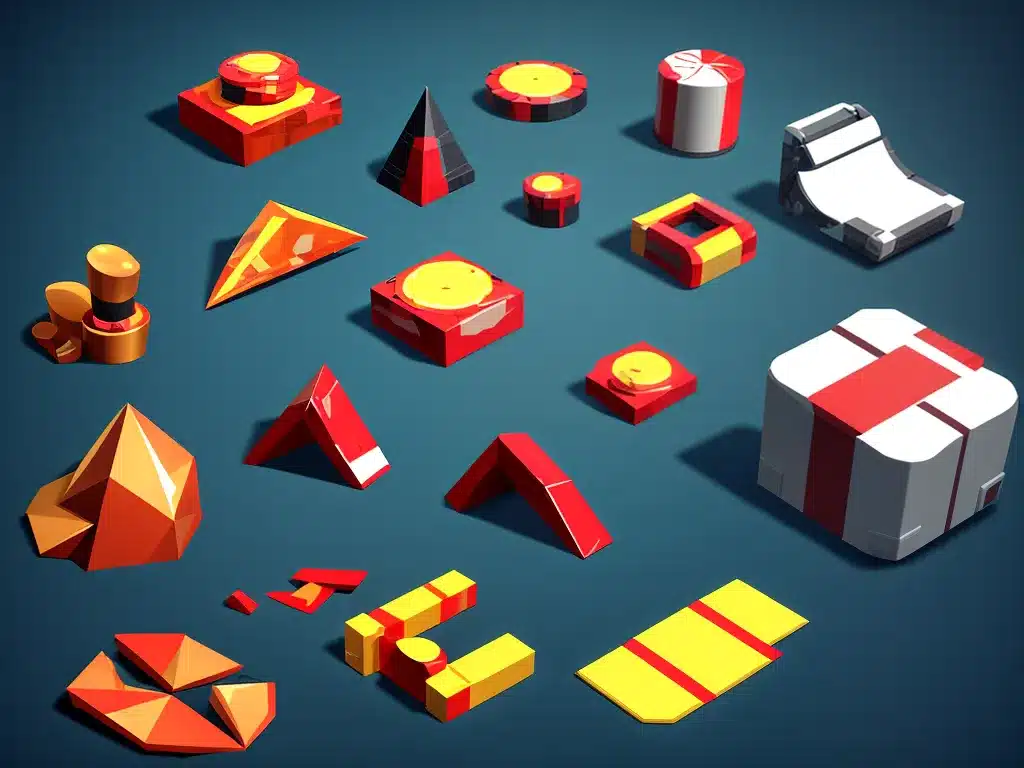Introduction
Creating stylized graphics that look great without overtaxing mobile devices is crucial for mobile game developers. Mobile chips have limited processing power compared to desktop GPUs, so efficiency is key. With some thoughtful optimization and stylization techniques, you can achieve visually impressive graphics without compromising performance on mobile.
Optimizing 3D Models and Textures
3D models and textures are a major contributor to graphical strain. Here are some ways to optimize them:
Use Fewer Polygons
- Polycount directly impacts rendering cost. Use as few polygons as possible while retaining the desired shape.
- Optimize models to have mostly large, flat surfaces instead of many small details.
- Avoid complex curved surfaces when possible.
Employ Normal/Bump Mapping
- Normal maps and bump maps create illusion of detail without more polygons.
- Bake high-poly models to normal maps applied on low-poly versions.
Compress Textures
- Texture compression like ETC2 reduces size with minimal quality loss.
- Use smallest texture sizes that look acceptable. Scale down large source textures.
Avoid Complex Shading
- Favor lambertian and simple glossy shading over complex layered materials.
- Use fewer lights and shadows. Baked lighting can give nice look with low cost.
Stylization Techniques
Carefully chosen stylization can make relatively simple 3D graphics look distinctive and appealing.
Use Bold, Colorful Shading
- Cel shading with strong light/dark contrasts looks great.
- Vibrant, saturated colors are eye-catching.
- Ramp textures add color variation while using fewer materials.
Incorporate Hand-Painted Elements
- 2D illustrations mix nicely with 3D on mobile.
- Animated brush strokes bring traditional media feel.
- Painted UI elements match art style.
ConsiderAbstraction
- Geometric shapes, solid colors, and simple forms are performant.
- Low polygon models with clean lines fit many styles.
- Abstract environments like solid color skies simplify scenes.
Utilize Visual Effects Sparingly
- Effects like glows, blurs, and particles add flair but cost performance.
- Use effects minimally on key elements for targeted impact.
- Avoid expensive particle and physics simulations.
Animate Minimal Elements
- Complex character skeletons and cloth/hair physics drain resources.
- Rig only key body parts needed for animation.
- Focus animation on transformations like position and rotation.
Optimizing Effects and Post-Processing
Image effects and post-processing enable stylized rendering without much GPU cost:
Use Mobile-Optimized Image Effects
- Targeted color and contrast adjustments (like saturation boosts) are low cost.
- Simple pixelation adds retro aesthetic without textures.
- Outline/border effects define shapes cleanly.
Minimize Render Targets
- Each render target for effects adds memory bandwidth.
- Apply multiple effects sequentially on fewer targets when possible.
- Avoid complex multilayered effect pipelines.
Employ Approximations Over Costly Effects
- Fake glows/blooms with bright colored particles/sprites.
- Approximate depth of field/motion blur with depth textures.
- Pre-render and composite complex effects when feasible.
Limit Post-Process Resolution
- Render post-effects at lower resolution than main render targets.
- Upscale results minimally to preserve quality without big performance hit.
Optimizing Shaders and Rendering
Shaders and overall rendering approach have a big impact on mobile GPU load:
Simplify Shaders
- Avoid costly math (trig, exp), loop iterators, and branching in shaders.
- Use lower precision data types when possible.
- Combine textures with shader parameters to minimize sampling.
Render selectively
- Use small, centered field of view and aggressive level of detail system.
- Cull small/distant objects aggressively.
- Occlusion cull dynamically with coarse proxies.
Consider Tile-Based Rendering
- Subdivide screen into tiles and cull/render per tile.
- Reduce overdraw and redundant work between tiles.
- Well-suited for 2D/2.5D games.
Batch Similar Objects
- Instance rendering with shared buffers reduces draw calls.
- Limit unique materials by re-using among objects.
- Draw static geometry together.
Use Efficient Intermediate Buffers
- Avoid default framebuffer anti-aliasing. Implement FXAA post-effect instead.
- Disable unused buffer attachments like stencil and depth when possible.
- Use lower precision color buffers if acceptable.
Conclusion
With deliberate design choices and targeted optimization techniques, mobile games can achieve compelling stylized graphics without overtaxing limited mobile chips. Careful polycount and texture reduction, strategic stylization, and rendering optimizations together enable great performance and visuals. Clever technical art direction plays a key role in unlocking the full potential of mobile graphics.













